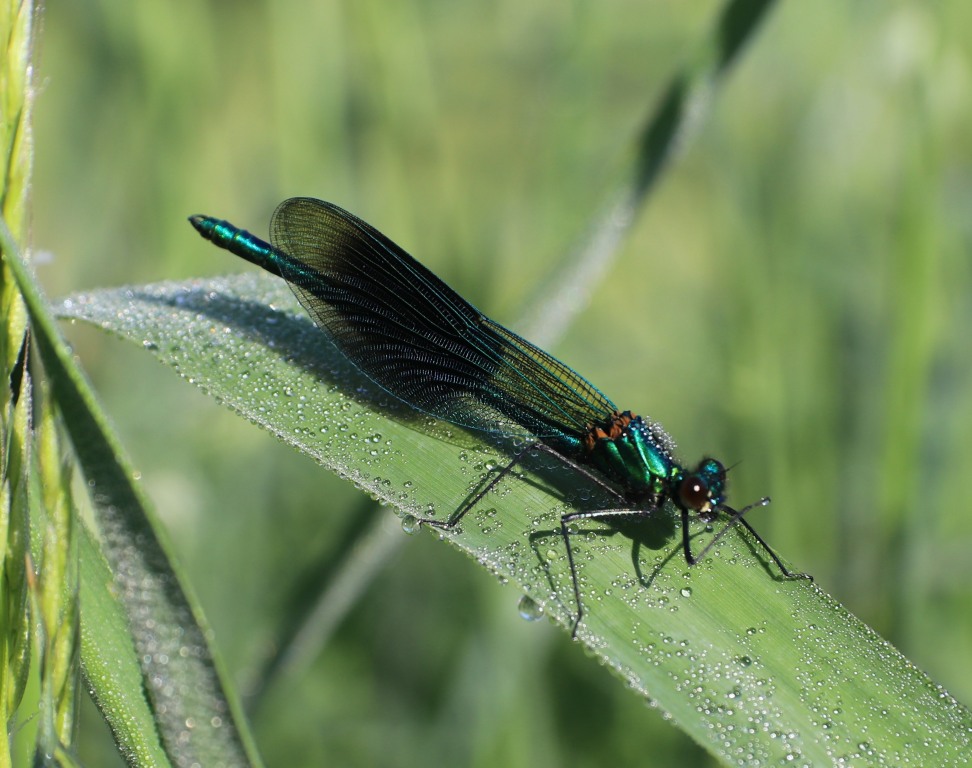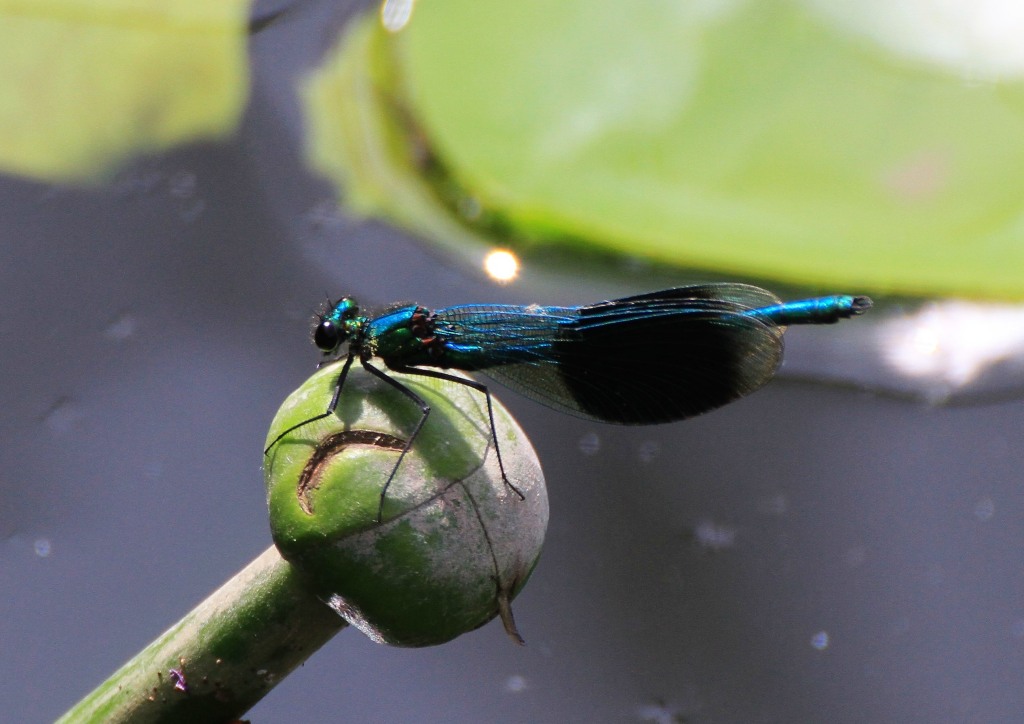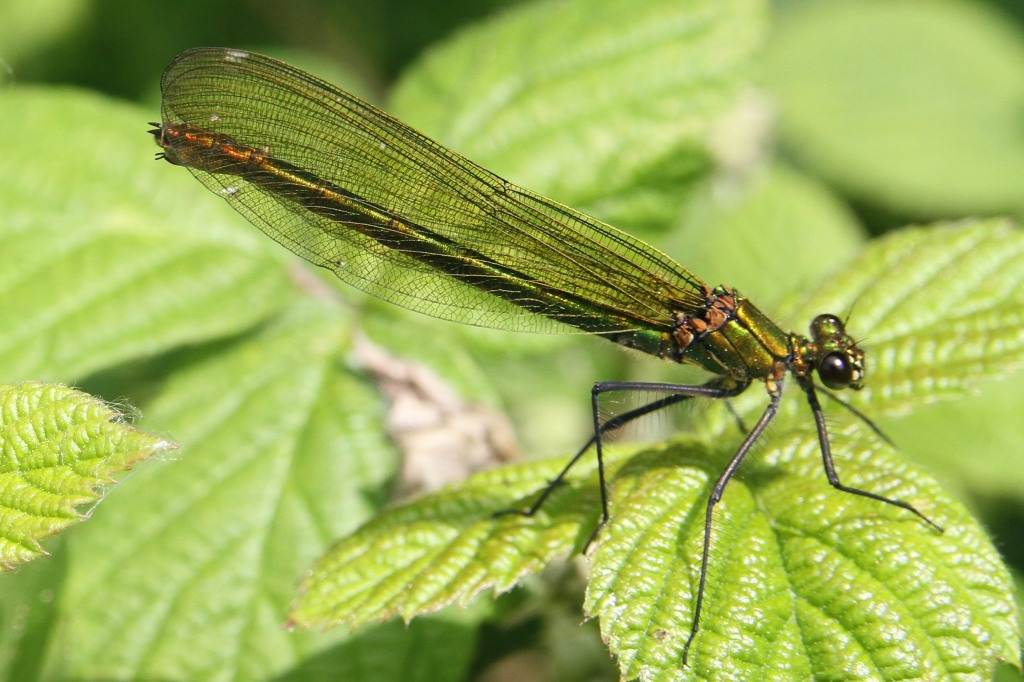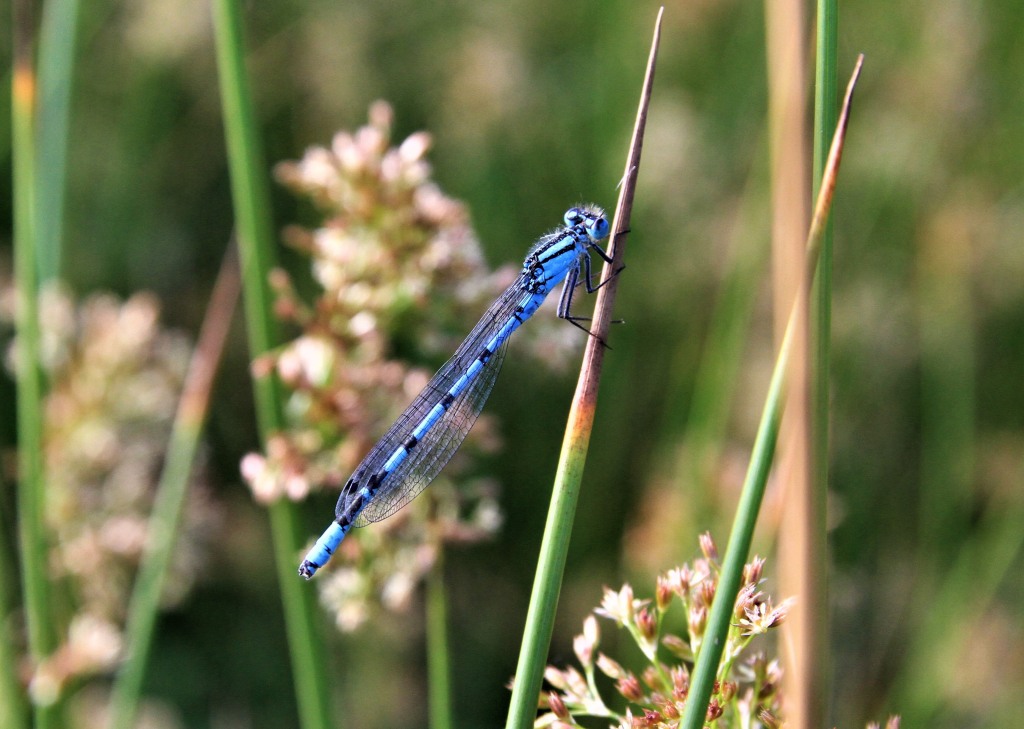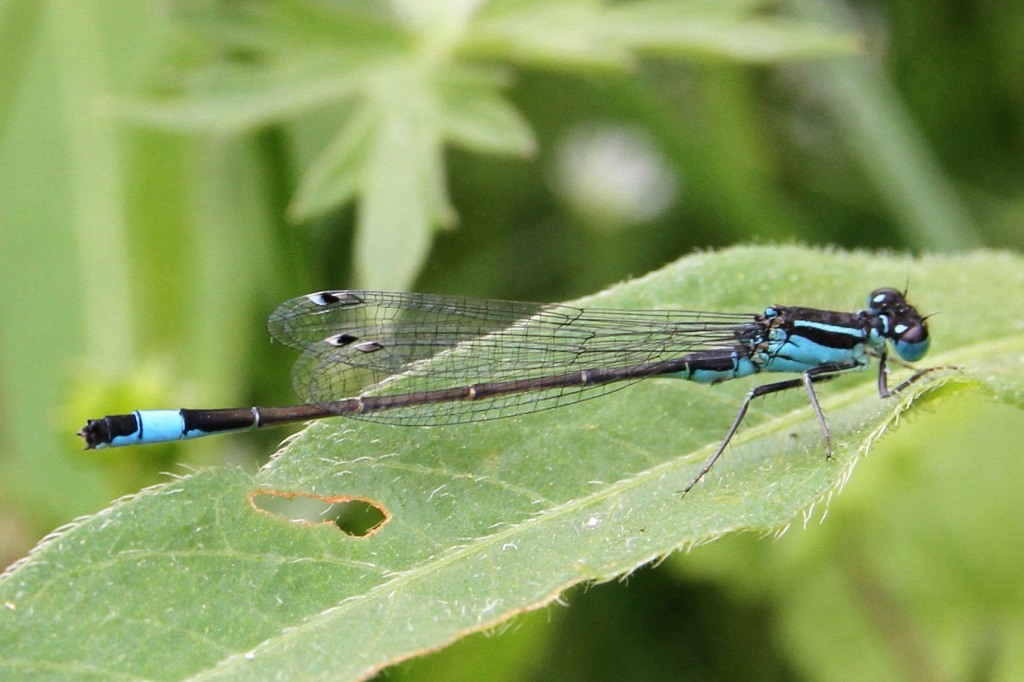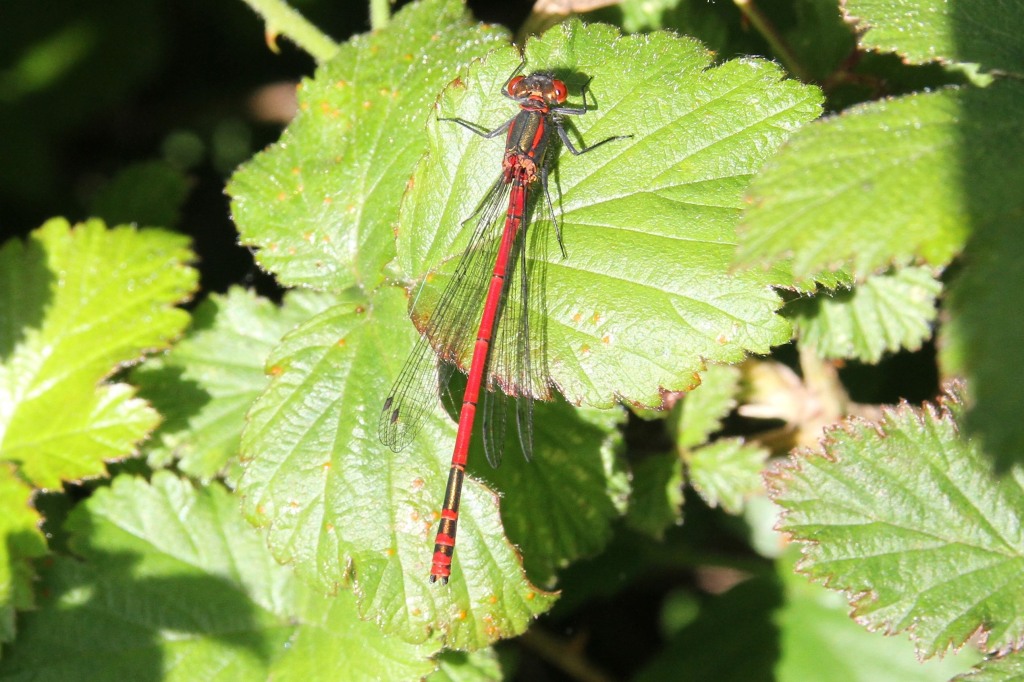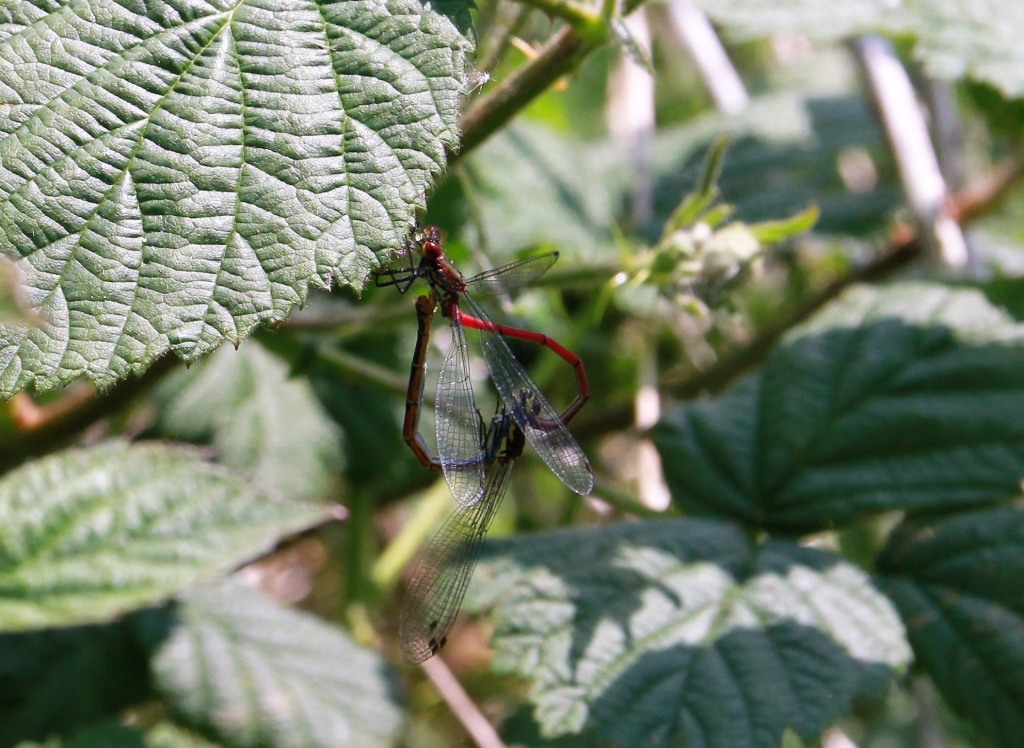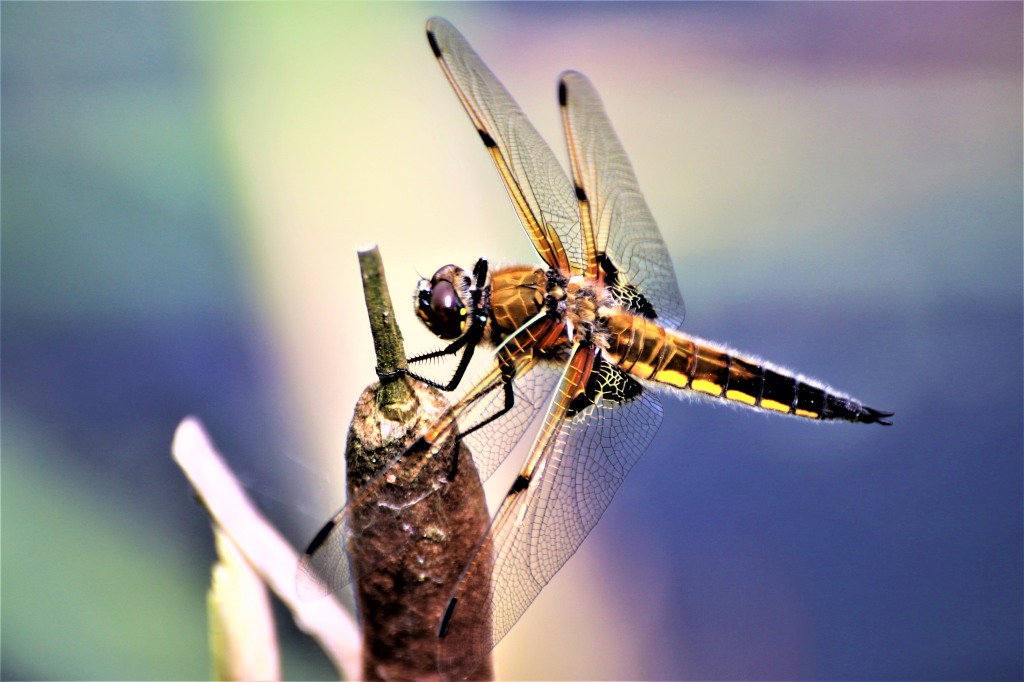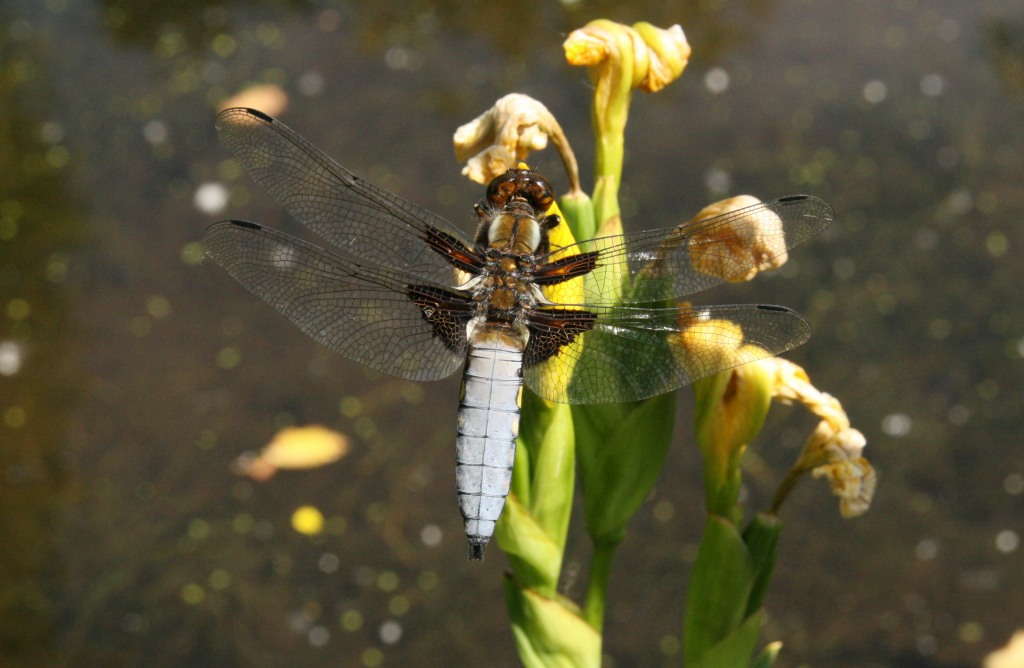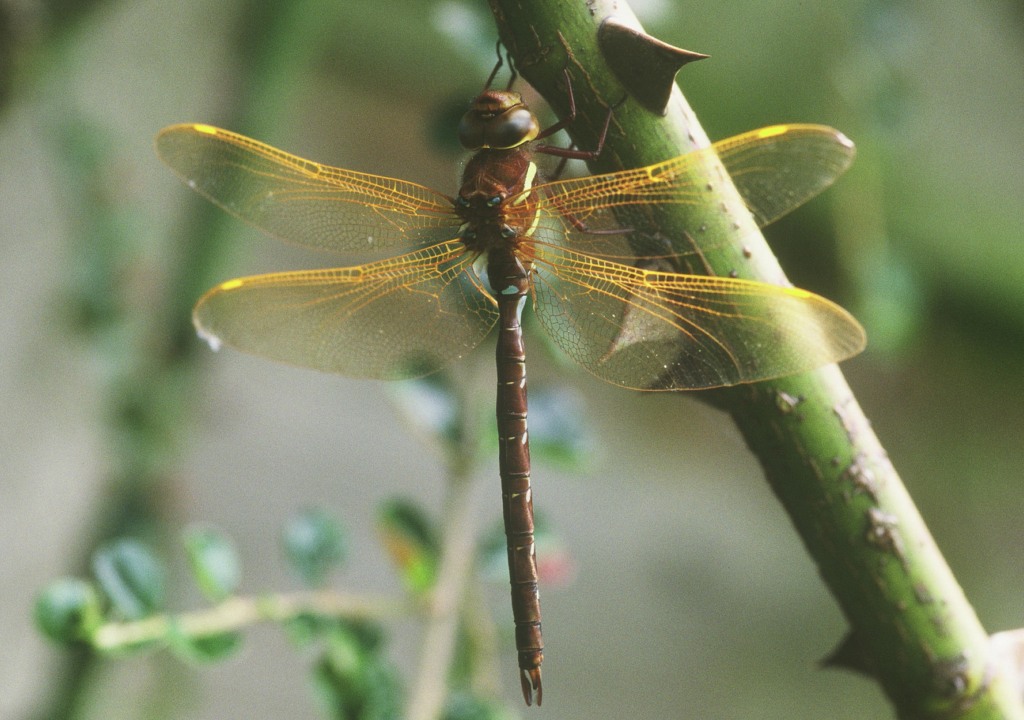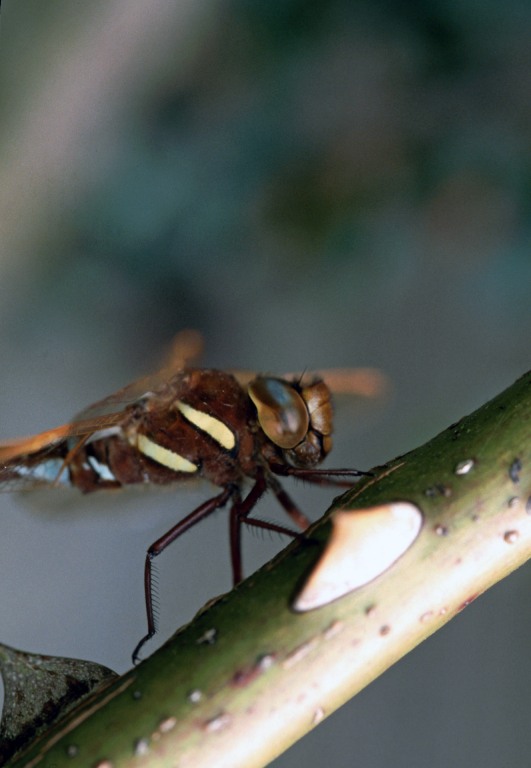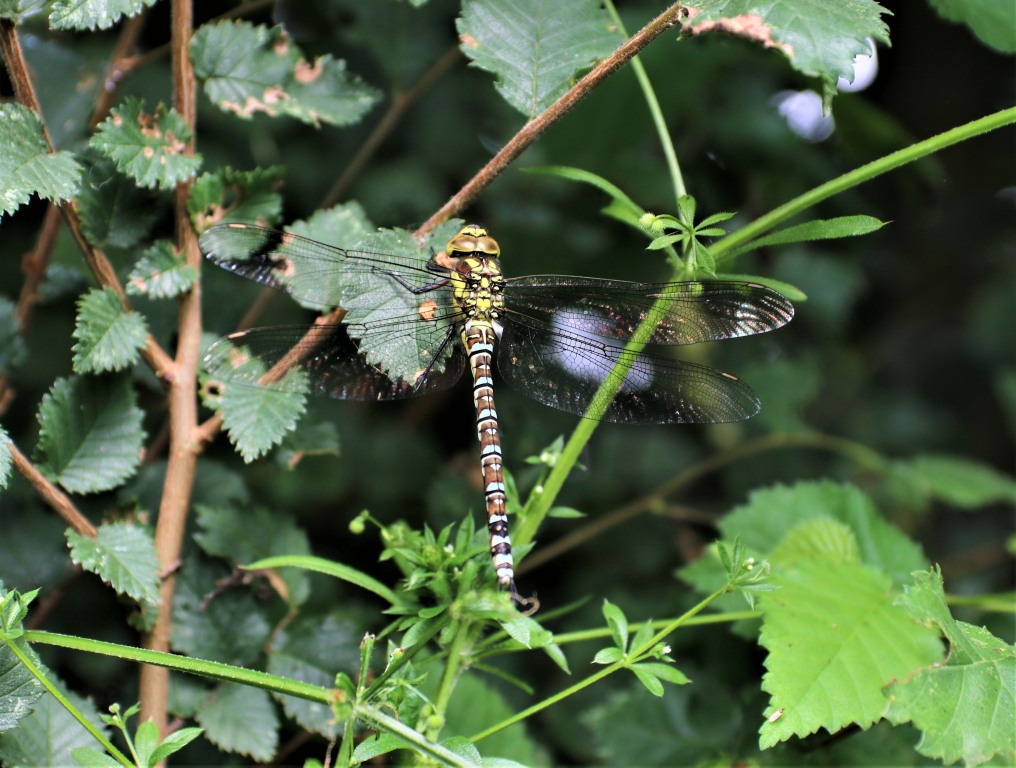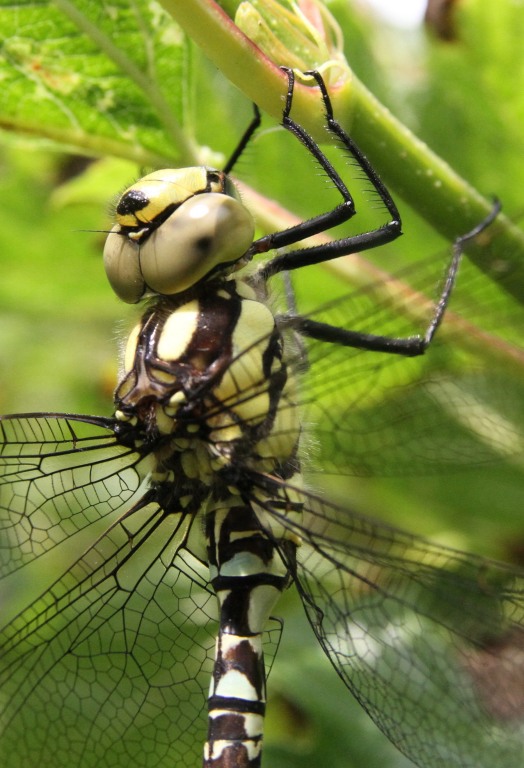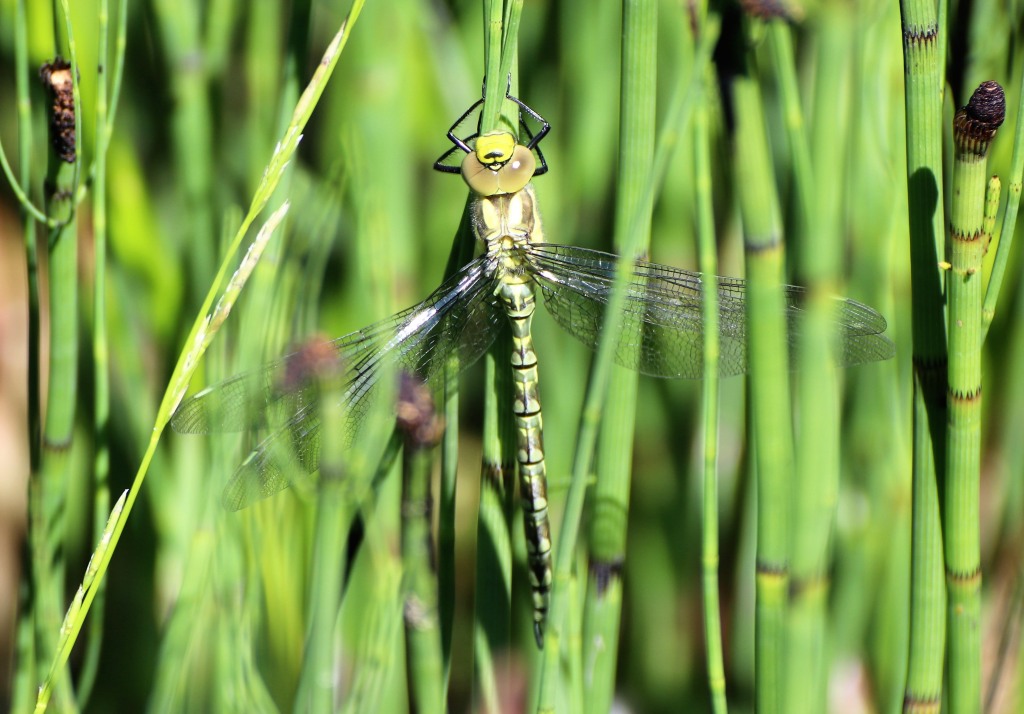

This has been one of the most extraordinary years for the emergence of dragonflies and damselflies. It might be that the very wet conditions followed by warm sun encouraged their development, but those of us watching the river and reserve at Hockenhull and the ponds at Hockenhull and Walk Mill have seen some amazing sights. The first dragonflies to emerge were the four spotted chasers. These small darting dragonflies behave as their name suggests, by darting around ponds and water surfaces, so it was a great surprise to count 25 on the day they emerged. The highest previous count was 2 in a year! These were followed a few days later by common blue damselflies, but instead of tens of these tiny insects emerging there were thousands, in fact clouds of them could be seen mating almost in a frenzy. Something I have never witnessed before. The following day tens of male banded agrion damselflies, easily identified by their four dark blue spots on blue wings were behaving like mini helicopters, hovering around helpless females waiting their turn to mate. Their preferred habitat is a long stranded reed on the Gowy which at present is covered in a dainty white flower called floating water crowfoot. There, upwards of an estimated 500 of these beautiful damselflies were seen flying low over the water on a warm sunny afternoon.
If that wasn’t enough, the following day saw tens of large red damselflies emerge followed by hundreds of blue tailed damselflies. These events took place at the beginning of June, and the 4 spotted chasers have been replaced by wider bodied “broad bodied chasers” and two of the biggest species of dragonfly we have in the area, the brown hawker and the southern hawkers, started to be seen at Christleton Pit, in the village and at Hockenhull. The southern hawkers with long blue/green and black markings will often hang on vegetation especially early in the morning making them relatively easy to photograph. They also have the habit of buzzing up and around you as if inspecting you before settling, whilst the all brown “brown hawkers” are on the move all the time.
We have also had some exciting developments on the Legion Meadow, where four common spotted orchids suddenly emerged amongst all the expected meadow flowers. Common spotted orchids can be found in the wet meadow at Hockenhull and in several fields along Plough Lane, and one even appeared in a garden at Rowton last summer, but these are the first orchids to appear in the village itself as far as I know. After many years of waiting, the Legion meadow is now beginning to develop as an exciting wild flower meadow. There are lots of native species emerging such as ragged robin, meadow cranesbill, buttercup, yellow rattle, St John’s wort, spear thistle, oxeye daisy, birds foot trefoil, dog rose, yarrow and common vetch. There are several paths cut and mowed to let you walk through the meadow, not only to see the flowers, but an increasing number of butterflies such as the holly blue, heath brown and speckled wood.
-

Banded Agrion Damselfly
-

Banded Agrion Damselfly
-

Banded Agrion Female
-

Common Blue Damselfly
-

Blue Tailed Damselfly
-

Large Red Damselfly
-

Large Red Damselfles
-

Spotted Chaser
-

Spotted Chaser
-

Spotted Chaser
-

Broad-bodied Chaser Male
-

Brown Hawker
-

Brown Hawker head
-

Southern Hawker
-

Southern Hawker close up
-

Southern Hawker emerging
-

Spider's catch of Damselflies

